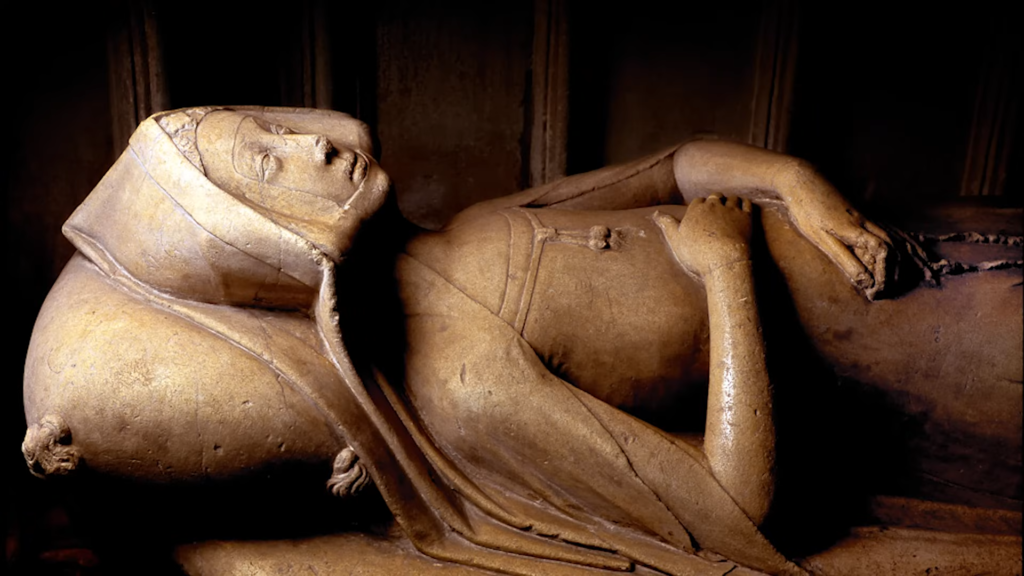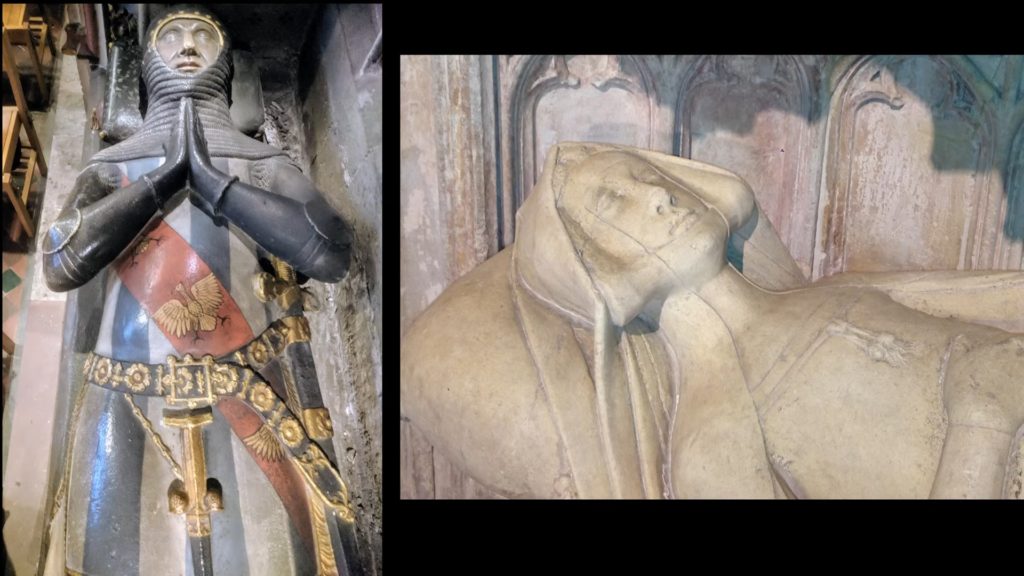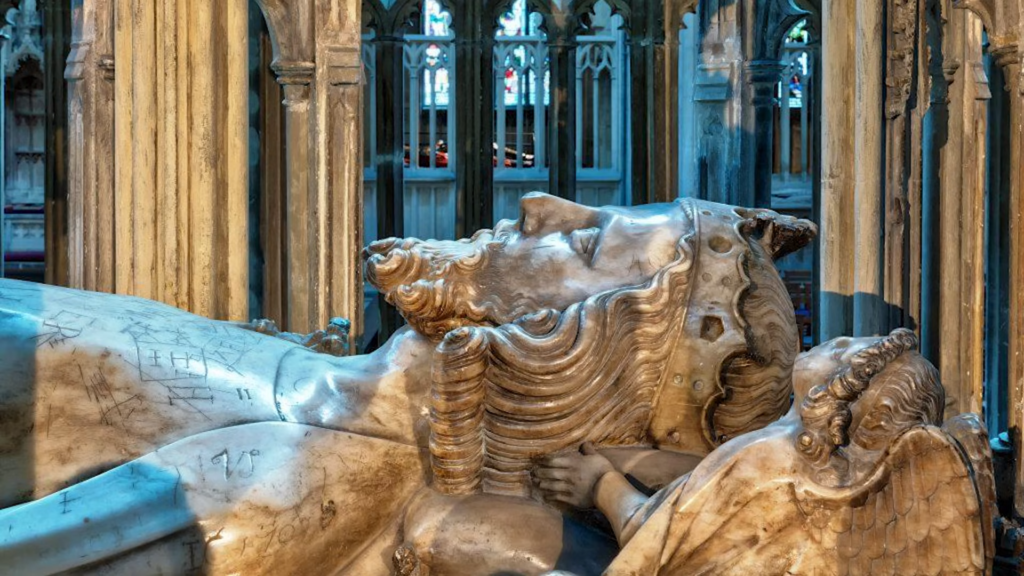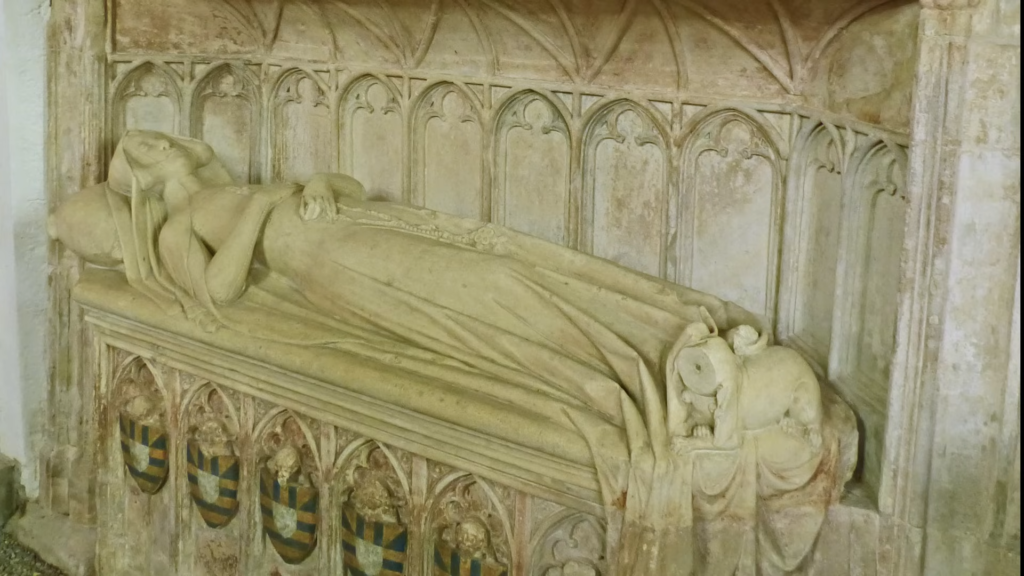Nestled within the serene confines of St. Bartholomew’s Church in the quaint village of Much Marle lies a monument shrouded in intrigue – the final resting place of Blanch Lady Granderson. Revered for her beauty and enigmatic allure, Blanch’s tomb has earned the affectionate moniker of the Tomb of Sleeping Beauty among locals.

Blanch Granderson’s story unfolds like a tapestry woven with threads of nobility and intrigue. Born into privilege, she was the youngest daughter of Roger Mortimer, the first Earl of March, a figure who left an indelible mark on English history in the 14th century. Blanch’s fate was sealed at a tender age when she was wedded to Piers de Granderson, a man twice her senior, in a strategic union aimed at solidifying familial alliances.

However, Blanch’s life was not merely a pawn in the game of noble politics. Despite her aristocratic upbringing, she exuded a warmth and grace that endeared her to those around her. This endearment is palpable in the meticulous effigy adorning her tomb, crafted with such lifelike precision that it seems to transcend the boundaries of time.
Her effigy, delicately reclining with lips parted in eternal repose, speaks volumes of a life cherished and remembered. Adorned with intricately carved details, from the folds of her gown cascading over the tomb chest to the gentle clasp of prayer beads in her hand, every element exudes a sense of reverence for the departed.

Yet, it is not merely the outward grandeur of Blanch’s monument that captivates the imagination but the secrets it holds within. In a remarkable discovery during a conservation effort, the tomb chest was found to contain more than just architectural remnants – nestled within the rubble fill lay the anthropoid lead shell encasing Blanch’s remains.
This revelation defied convention, as medieval tombs typically housed empty chests with the deceased interred below. The lead shell, though decayed in parts, offered a glimpse into the meticulous burial rites of the era, hinting at layers of waxed cloth and ceremonial wrappings that enshrouded Blanch in her final rest.

As the enigma of Blanch Lady Granderson’s tomb continues to unravel, it serves as a testament to the enduring allure of history’s mysteries. Beyond the stone walls and weathered effigies lies a tale waiting to be unearthed, a legacy of love, ambition, and the timeless quest for immortality.





